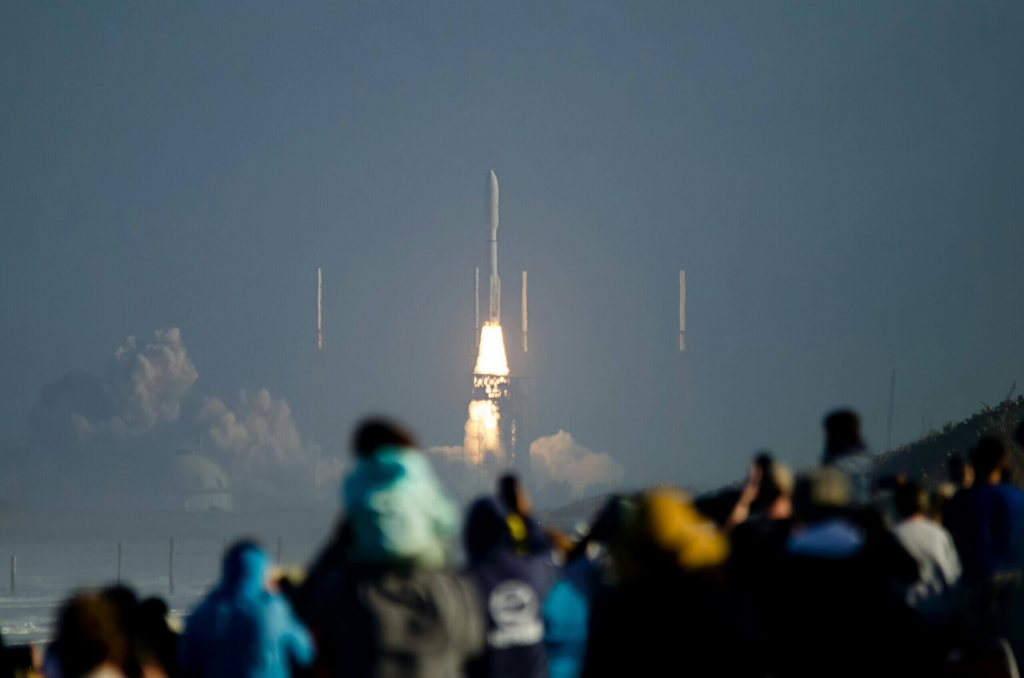Space technology, once the exclusive domain of government agencies and science fiction, is now one of the most exciting and accessible frontiers for modern investors. With the rise of private companies entering the space race, investment in space-related ventures has shifted from speculative dream to a legitimate portfolio option. From satellite networks and space tourism to asteroid mining and deep-space exploration, the space economy is growing and investors are taking notice.
The Rise of the Space Economy
In recent years, the space sector has evolved dramatically. Government agencies like NASA and the European Space Agency (ESA) have increasingly partnered with private firms, catalyzing innovation and opening the door to commercial opportunities. According to Morgan Stanley, the global space industry could generate more than $1 trillion in revenue by 2040.
Private companies such as SpaceX, Blue Origin, and Rocket Lab have drastically reduced launch costs, making space more accessible than ever. Meanwhile, publicly traded companies like Boeing, Lockheed Martin, and Northrop Grumman have continued to expand their space-focused divisions.

Key Areas of Investment in Space Technology
1. Satellite Infrastructure and Services
Satellites provide services essential to modern life GPS, telecommunications, weather forecasting, and earth observation. Companies like Iridium, Globalstar, and Maxar Technologies specialize in these areas.
With projects like SpaceX’s Starlink and Amazon’s Project Kuiper, the race is on to provide global satellite internet coverage. These initiatives require thousands of satellites and offer a recurring revenue model from data services.
2. Launch Providers
Launching payloads into orbit has become a competitive and increasingly commercial business. SpaceX, Rocket Lab, and Astra are pushing the boundaries with reusable rockets and cost-efficient launches.
Though not all are publicly traded, some launch-related firms, such as Virgin Galactic (SPCE), offer exposure to space travel and suborbital tourism.
3. Space Tourism
What was once the realm of science fiction is now reality. Virgin Galactic and Blue Origin have already sent private citizens into suborbital space, while SpaceX is planning orbital missions for non-professional astronauts.
The tourism model remains niche and risky but is expected to expand as technology matures and prices fall.
4. Space Mining and Exploration
Although in its early stages, companies are exploring the feasibility of mining asteroids for rare earth elements and other valuable resources. While still speculative, this could become a multi-billion-dollar industry if logistical and technological hurdles are overcome.
NASA’s Artemis program and missions to Mars are also paving the way for future commercial partnerships.
5. Space-Based Manufacturing and Research
Microgravity conditions allow for unique manufacturing processes not possible on Earth. For example, fiber optics, pharmaceuticals, and semiconductors can potentially be produced with greater efficiency in space.
Companies like Redwire Space are already working on 3D printing and biotech research aboard the International Space Station.
Ways to Invest in Space Technology
1. Direct Stocks
Investors can buy shares in publicly traded space companies like:
- Virgin Galactic (SPCE) – focused on suborbital tourism
- Maxar Technologies (MAXR) – satellite and earth imaging
- Boeing (BA) and Lockheed Martin (LMT) – aerospace and defense giants with significant space segments
2. ETFs
Several exchange-traded funds focus specifically on space exploration:
- ARKX – ARK Space Exploration & Innovation ETF
- UFO – Procure Space ETF
- SPCE – for individual exposure to Virgin Galactic
These ETFs provide diversified exposure to both established and emerging space companies.
3. Venture Capital and Private Markets
For accredited investors, private equity and venture capital funds may offer access to pre-IPO space tech startups. These investments are higher risk but potentially high reward.
Risks of Investing in Space Technology
While space tech offers exciting potential, it comes with substantial risks:
- Technological Uncertainty: Many space ventures rely on untested technology with long development timelines.
- Regulatory Challenges: Space activities are governed by international treaties and national regulations, which can create legal and logistical hurdles.
- High Capital Requirements: Space ventures often require massive capital with long return horizons.
- Market Volatility: Space stocks can be extremely volatile, reacting strongly to news, launch successes/failures, or regulatory updates.

The Case for Long-Term Investing
For patient, long-term investors, space technology offers an opportunity to get in early on a potentially transformative industry. Much like the internet in the 1990s or renewable energy in the 2000s, space could represent a new industrial revolution.
As the cost of access to space continues to fall and commercialization accelerates, more industries from agriculture to logistics will begin to rely on space-based infrastructure. The convergence of space tech with AI, robotics, and renewable energy only increases the potential.
Ethical and Environmental Considerations
Space expansion raises concerns about sustainability. Issues like space debris, military weaponization, and environmental impact from launches must be considered. Investors should evaluate how companies address these risks and whether their strategies are aligned with long-term planetary stewardship.
Expanding Horizons in Space Technology Investing
Beyond the current developments you’ve outlined, the space industry is rapidly moving into areas that only a few years ago seemed impossible for investors to access. One of the most notable shifts is the integration of space technology with other high-growth sectors such as artificial intelligence, renewable energy, and advanced robotics. This convergence is enabling smarter satellite networks, autonomous spacecraft, and more efficient mission planning, all of which open up new avenues for long-term revenue generation.
A growing area of focus is in-orbit servicing and satellite life extension. Companies are developing spacecraft capable of repairing, refueling, or repositioning satellites already in orbit, effectively extending their operational lifespan and reducing the need for costly replacements. This service model could become a recurring revenue stream for both established aerospace firms and agile startups.
While the potential for high returns exists, space technology investing also requires an understanding of the market’s unique economic cycles. Many projects take years or even decades to become commercially viable, meaning that short-term price fluctuations may not reflect the true value of the underlying technology. Investors with a long-term mindset are better positioned to weather the inevitable volatility and capture the benefits once technologies reach operational maturity.
In addition to well-known players like SpaceX and Blue Origin, a new wave of specialized companies is emerging in niche sectors such as space debris mitigation. With thousands of satellites being launched over the next decade, the risk of orbital collisions and debris buildup is increasing. Firms working on debris removal technology, collision avoidance systems, and more sustainable satellite design are likely to attract attention from both regulators and commercial partners.
Space-based data analytics is another area gaining momentum. Satellites are capable of collecting massive amounts of data on climate change, agricultural patterns, shipping routes, and natural resource management. Companies that can process and monetize this information offering actionable insights to industries like insurance, energy, and logistics are carving out a profitable niche within the broader space economy.
As investment channels diversify, more retail investors are gaining access to the space industry through fractional ownership platforms and thematic investment funds. This democratization of access means that even small investors can participate in the industry’s growth, provided they carefully research the underlying assets. Exchange-traded funds focused on space innovation offer an attractive entry point for those looking to gain diversified exposure without having to pick individual winners in a fast-evolving field.
For institutional and accredited investors, private placements in pre-IPO companies continue to present some of the most lucrative opportunities, albeit with higher risk. Many groundbreaking technologies originate in small, venture-backed firms before being acquired by major aerospace corporations or going public. However, these opportunities often come with long investment horizons, illiquidity, and the possibility of complete loss of capital if a project fails to deliver.
Government policy and international cooperation will also shape the pace and nature of growth in the space industry. Countries are working to update legal frameworks that address ownership of space resources, regulation of satellite traffic, and environmental sustainability of launch operations. Investors should monitor these developments closely, as favorable regulation can accelerate market adoption, while restrictive rules may slow certain activities.

Public perception and ethical considerations are increasingly relevant as space becomes a commercial frontier. Companies that demonstrate a commitment to sustainable practices such as minimizing carbon emissions from launches or contributing to global space debris cleanup efforts are more likely to gain long-term investor confidence. This alignment between profitability and environmental responsibility is not just good ethics; it’s becoming a competitive advantage in securing government contracts and consumer trust.
Looking to the next decade, the commercialization of lunar missions, expansion of space stations for research and manufacturing, and integration of satellite infrastructure with autonomous vehicles on Earth could dramatically expand the revenue potential of the sector. The interplay between technological innovation, private capital, and public policy will determine which companies emerge as leaders in this new era.
For investors seeking growth, the key is to approach space technology as part of a balanced, diversified portfolio. While it may be tempting to chase the next headline-making company, a disciplined strategy that combines exposure to established aerospace firms with calculated bets on innovative startups is more likely to deliver consistent returns. By understanding the unique risks, market drivers, and long-term trends shaping the space economy, investors can position themselves to benefit from one of the most exciting industries of the 21st century an industry that quite literally has no ceiling.
Final Thoughts
Investing in space technology is not just about chasing novelty it’s about participating in the next chapter of human progress. While still early-stage and volatile, space investing has matured significantly and offers real opportunities for those with vision and patience.
As with any investment, diversification is key. For most investors, space-related investments should represent a small slice of an overall portfolio, balanced by more stable assets. But for those looking to invest in innovation and the future, the stars might just be the limit.
